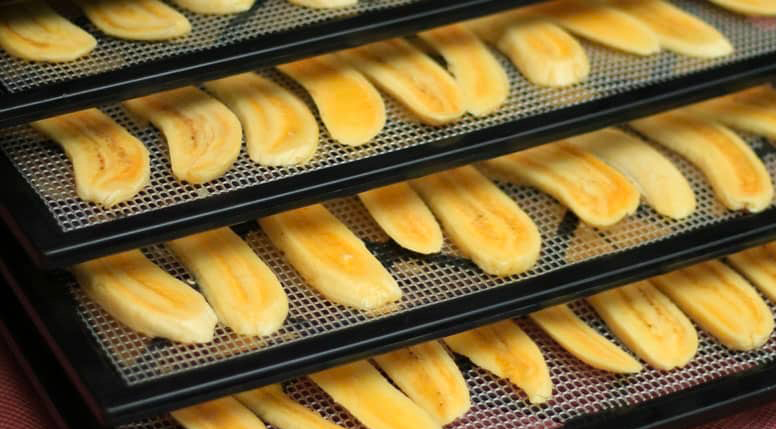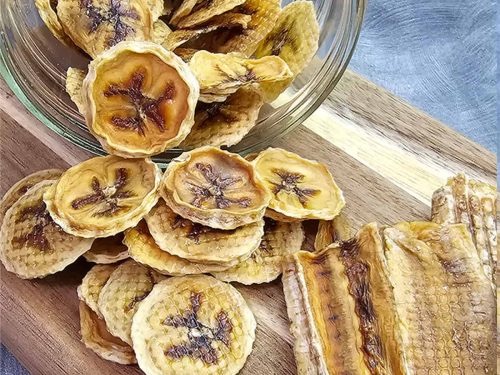
Content Menu
● Understanding Food Dehydration
● How Does a Food Dehydrator Work?
● Benefits of Using a Food Dehydrator
● Types of Foods Suitable for Dehydration
● The Dehydration Process
● Common Uses for Dehydrated Foods
● Tips for Effective Dehydration
● Caring for Your Food Dehydrator
● Health Benefits of Dehydrated Foods
● Conclusion
● FAQ
>> 1. What is a food dehydrator?
>> 2. How long does it take to dehydrate food?
>> 3. Can I dehydrate meat?
>> 4. Do I need to pre-treat fruits before dehydration?
>> 5. How should I store dehydrated foods?
● Citations:
Food dehydrators are increasingly popular appliances for those looking to preserve food while maintaining its nutritional value. This article will explore the workings of food dehydrators, their benefits, and practical applications, aiming to provide a comprehensive understanding of this essential kitchen appliance.

Understanding Food Dehydration
Food dehydration is the process of removing moisture from food items, which helps to prevent spoilage and extends shelf life. By eliminating water content, dehydrated foods become lighter and less prone to bacterial growth. This method of preservation has been used for centuries, but modern technology has made it more efficient and accessible.
How Does a Food Dehydrator Work?
A food dehydrator operates through a combination of heat and airflow. Here's how the process unfolds:
1. Heating Element: The dehydrator contains a built-in heating element that raises the temperature inside the unit. This heat is crucial for drawing out moisture from the food.
2. Air Circulation: A fan circulates warm air evenly throughout the dehydrator. This airflow ensures that all food items dry uniformly, preventing spoilage and maintaining nutritional value.
3. Trays and Racks: Food is placed on trays or racks within the dehydrator. These trays are designed to allow air to circulate freely around the food, facilitating even dehydration.
4. Temperature Control: Many modern dehydrators come with adjustable temperature settings, allowing users to customize the drying process based on the type of food being preserved. For instance, fruits typically require higher temperatures than herbs.
5. Moisture Removal: As moisture evaporates from the food, it is carried away by the airflow and expelled through vents in the dehydrator, creating an optimal drying environment.
Benefits of Using a Food Dehydrator
Using a food dehydrator offers numerous advantages:
- Nutrient Preservation: Dehydration retains more vitamins and minerals compared to other preservation methods like canning or freezing.
- Long Shelf Life: Dehydrated foods can last for years when stored properly, making them ideal for long-term storage or emergency supplies.
- Cost-Effective: By buying fruits and vegetables in bulk when they are in season, users can save money and reduce waste.
- Versatility: A wide variety of foods can be dehydrated, including fruits, vegetables, meats (like jerky), and herbs.
- Healthy Snacking: Dehydrated foods make nutritious snacks without added preservatives or sugars found in many store-bought options.
Types of Foods Suitable for Dehydration
Not all foods dehydrate equally well. Here are some common types suitable for dehydration:
- Fruits: Apples, bananas, mangoes, and berries are popular choices due to their natural sugars and flavors.
- Vegetables: Carrots, bell peppers, tomatoes, and zucchini can be dried for use in soups or snacks.
- Herbs: Basil, oregano, thyme, and mint retain their flavors well when dried.
- Meats: Lean cuts of meat can be transformed into jerky when properly marinated and dehydrated.
The Dehydration Process
The dehydration process varies depending on the type of food being dried. Here's a general overview:
1. Preparation: Wash and cut the food into uniform pieces to ensure even drying. Some fruits may require pretreatment (like soaking in lemon juice) to prevent browning.
2. Loading Trays: Place the prepared food on trays without overcrowding them to allow adequate airflow.
3. Setting Temperature: Adjust the dehydrator's temperature according to the type of food:
- Fruits: 135°F (57°C)
- Vegetables: 125°F (52°C)
- Herbs: 95°F (35°C)
- Meats (after cooking): 130°F - 140°F (54°C - 60°C)
4. Dehydrating Time: The drying time varies based on factors such as thickness and moisture content but typically ranges from several hours to a full day.
5. Cooling and Storage: Once dried, allow food to cool before storing it in airtight containers in a cool, dark place.
Common Uses for Dehydrated Foods
Dehydrated foods have various applications:
- Snacking: Dried fruits and vegetables make healthy snacks.
- Cooking Ingredients: Dried vegetables can be rehydrated for soups or stews.
- Camping and Hiking: Lightweight dehydrated meals are perfect for outdoor adventures.
- Emergency Preparedness: Stocking up on dehydrated foods ensures you have nutritious options during emergencies.
Tips for Effective Dehydration
To maximize your results when using a food dehydrator:
- Cut Uniformly: Ensure that all pieces of food are cut to similar sizes to promote even drying.
- Avoid Overcrowding: Leave space between pieces on trays to allow air circulation.
- Monitor Progress: Check your food periodically during dehydration to avoid over-drying; if unsure, test by placing some pieces in a glass—if it fogs up, they need more time.
- Conditioning Dried Foods: After drying, let your foods sit in a jar for several days to equalize moisture levels before long-term storage; this helps prevent mold growth.

Caring for Your Food Dehydrator
Proper maintenance extends the lifespan of your dehydrator:
- Cleaning After Use: Clean trays and surfaces after each use with warm soapy water; avoid submerging electrical components.
- Inspect Regularly: Check heating elements and fans for any signs of damage or wear.
- Proper Storage: Store your dehydrator in a dry place when not in use; consider keeping it in its original box or using a dust cover.
Health Benefits of Dehydrated Foods
Dehydrating foods not only preserves them but also enhances their health benefits:
- Reduced Risk of Foodborne Illnesses: By removing moisture that bacteria need to thrive, dehydration lowers the risk of spoilage-related illnesses.
- Increased Fiber Content: Dried fruits and vegetables often have higher fiber concentrations compared to their fresh counterparts.
- Energy Boosting Snacks: Dried fruits provide concentrated sugars that can offer quick energy boosts—ideal for athletes or active individuals.
- Versatile Cooking Ingredient: Rehydrated foods can easily be incorporated into various recipes like soups, stews, casseroles, or baked goods.
Conclusion
Food dehydrators are invaluable tools for anyone interested in preserving food while retaining its nutritional benefits. By understanding how these appliances work and their benefits, users can make informed decisions about incorporating dehydration into their culinary practices. Whether you're looking to reduce waste or create healthy snacks, a food dehydrator offers a simple yet effective solution that enhances both health and convenience in meal preparation.

FAQ
1. What is a food dehydrator?
A food dehydrator is an appliance that removes moisture from food using heat and airflow to preserve it longer while retaining nutrients.
2. How long does it take to dehydrate food?
The time required varies by food type; fruits may take 6-12 hours while vegetables can take 4-10 hours depending on moisture content and thickness.
3. Can I dehydrate meat?
Yes! Meat can be dehydrated after cooking it first to an internal temperature of 165°F (74°C) to ensure safety before drying at 130°F - 140°F (54°C - 60°C).
4. Do I need to pre-treat fruits before dehydration?
Some fruits benefit from pre-treatment (like soaking in lemon juice) to prevent browning and maintain color during dehydration.
5. How should I store dehydrated foods?
Store dried foods in airtight containers in a cool, dark place to maximize shelf life; vacuum sealing is also an effective method for long-term storage.
Citations:
[1] https://www.mitchellcooper.co.uk/what-is-a-dehydrator-commercial-buying-guide
[2] https://www.webstaurantstore.com/guide/741/food-dehydrators-buying-guide.html
[3] https://homesteadingfamily.com/preservation-101-intro-to-dehydrating-food/
[4] https://www.youtube.com/watch?v=lEUA2t2XD5M
[5] https://www.bestbuy.com/discover-learn/10-reasons-to-buy-a-food-dehydrator/pcmcat1634332391134
[6] https://www.commercialdehydrators.com.au/dehydrating-recipes-filters
[7] https://www.osbheatpump.com/news/how-to-use-a-food-dehydrator-10-useful-tips-for-beginners-and-advanced-users/
[8] https://www.webmd.com/diet/dehydrating-food-good-for-you
[9] https://www.youtube.com/watch?v=rXNIHzcE8F0
[10] https://www.goodhousekeeping.com/appliances/a31904157/what-is-a-dehydrator/











